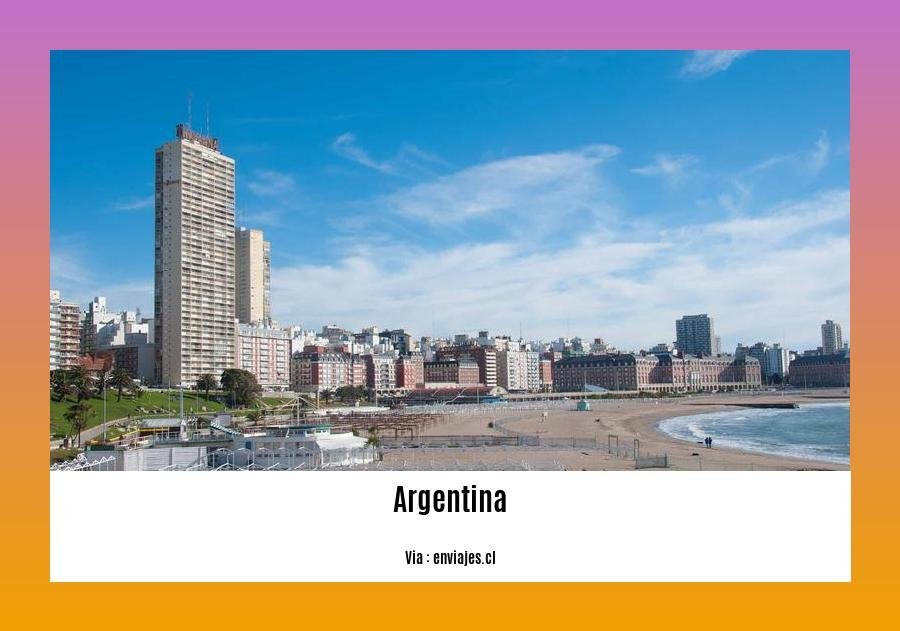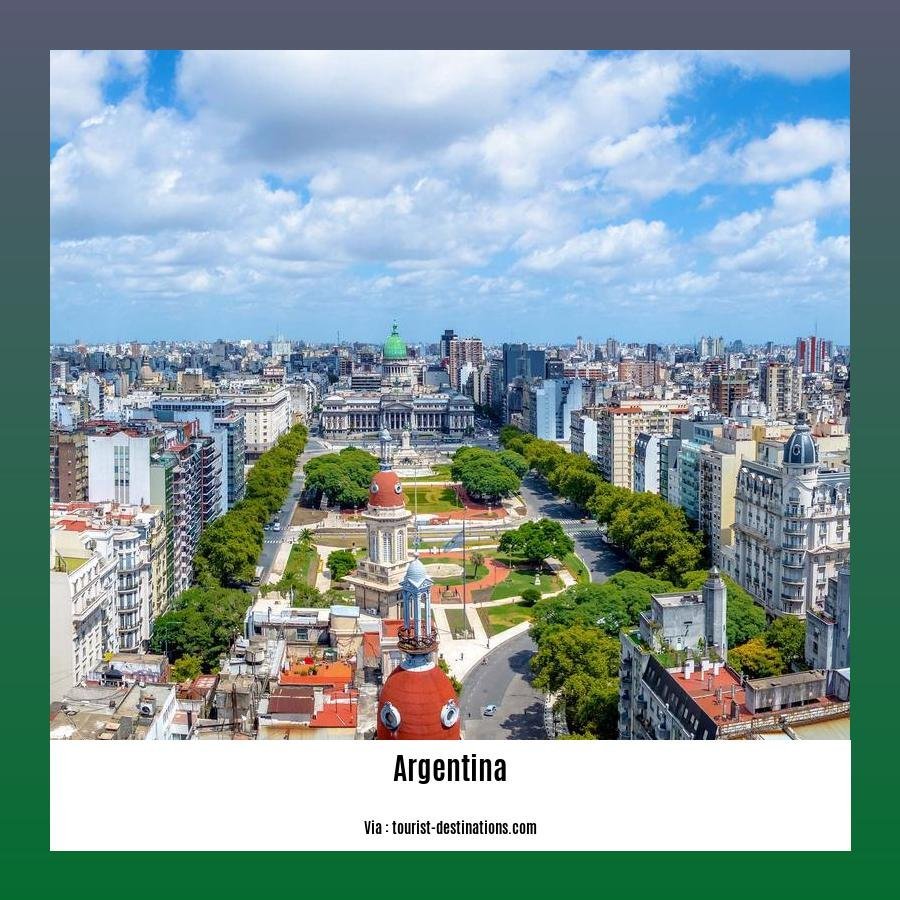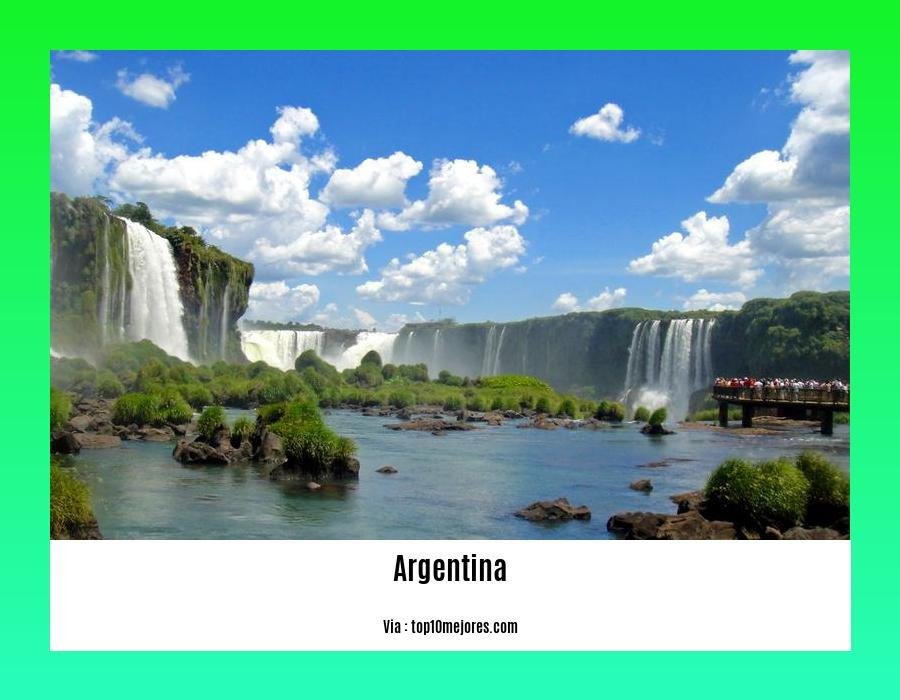Prepare to be captivated as we unveil the wonders of Argentina, a land pulsating with vibrant culture, breathtaking landscapes, and intriguing history. Join us on an extraordinary journey through this South American gem as we present 5 Fascinating Facts about Argentina: Discover the Wonders of the South.
Key Takeaways:
In 1989, Argentina witnessed a turbulent political period, having five presidents within two weeks.
The name “Argentina” stems from the Latin word for “silver,” a nod to its rich silver mining history.
Located in Patagonia, the Perito Moreno Glacier stands as the third-largest freshwater reserve globally, making it a remarkable natural wonder.
Argentina stands out as the first South American nation to legalize same-sex marriage in 2010, demonstrating its progressive approach to social issues.
In a unique twist, naming children “Messi” after the iconic footballer Lionel Messi is prohibited in Argentina to prevent the overuse of his renowned name.
5 Interesting Facts about Argentina

Welcome to the land of tango, where diversity dances, and nature’s wonders take your breath away. As a seasoned travel writer, I’ve discovered countless fascinating facts about this beguiling nation. Join me as I unveil 5 compelling anecdotes that will transport you to the heart of Argentina’s allure.
1. The ‘Messi’ Moniker: A Name Enshrined
In Argentina, Lionel Messi is more than a soccer legend; his name is a symbol of national pride. Yet, there’s a curious twist: parents are forbidden from naming their children “Messi” to prevent the overuse of this iconic moniker. Imagine a nation where every other child is named Messi! Argentina’s reverence for its soccer icon runs deep, but this unique law ensures that his legacy remains truly extraordinary.
2. Five Presidents in Two Weeks: A Whirlwind of Power
Hold on to your hats, because in 1989, Argentina witnessed a political roller coaster like no other. Within a tumultuous two-week period, the country saw five presidents come and go—a true test of resilience and adaptability. What a whirlwind that must have been! It’s a reminder of Argentina’s complex political history, where change can come at a dizzying pace.
3. Silver Lining: A Legacy Etched in Metal
Argentina’s name, derived from the Latin word for “silver,” pays homage to the country’s rich history of silver mining. Once upon a time, silver was the treasure that fueled dreams and shaped destinies. This precious metal left an indelible mark on Argentina’s identity, symbolizing its enduring strength and resilience.
4. Perito Moreno Glacier: Nature’s Icy Colossal
Nestled in the heart of Patagonia, the Perito Moreno Glacier stands as a testament to nature’s grandeur. As the third-largest reserve of fresh water on our planet, it’s a sight that leaves you breathless. Picture this: towering ice walls, radiant blue crevasses, and the thunderous roar of ice calving into the water. Perito Moreno is not just a glacier; it’s a symbol of the awe-inspiring power of the natural world.
5. A Pioneer in Equality: Argentina Leads the Way
In 2010, Argentina took a bold step towards social progress by becoming the first South American country to legalize same-sex marriage. This courageous move reflected Argentina’s commitment to equality and human rights, setting an example for the entire continent. It’s a testament to Argentina’s progressive spirit, where love and acceptance triumph over prejudice.
So, there you have it—five enticing facts that paint a vivid picture of Argentina’s rich tapestry. From the whimsical to the profound, these anecdotes offer a glimpse into the soul of this dynamic nation. Whether you’re a seasoned traveler or an armchair adventurer, let Argentina’s wonders ignite your imagination and transport you to a land where passion, history, and natural beauty intertwine.
Did you know that the Dominican Republic is home to the oldest European settlement in the Americas? Discover more fascinating facts about this Caribbean paradise when you read 10 fun facts about the Dominican Republic.
Argentina, the land of tango and gauchos, boasts a rich history and culture. Uncover three intriguing facts about this South American gem in our article 3 interesting facts about Argentina
Everglades National Park, a unique and diverse ecosystem, is home to an abundance of wildlife and fascinating natural wonders. Dive into the captivating world of the Florida Everglades with our article Facts about Florida Everglades.
The Aconcagua: Reaching the Summit of the Western and Southern Hemispheres

The Aconcagua, towering at 6,961 meters above sea level, stands as the highest peak not only in Argentina but in the entire Western and Southern Hemispheres, drawing adventurers and climbers from around the world.
Imagine standing atop the highest peak in the Western and Southern Hemispheres. The Aconcagua, a mighty sentinel of the Andes, beckons climbers with its breathtaking beauty and the allure of a summit that seems to touch the sky.
Scaling Aconcagua is a true test of mountaineering skills, requiring endurance, strength, and a deep respect for the mountain’s unpredictable weather and terrain. The ascent takes you through a diverse landscape, from lush green valleys to icy glaciers and barren rock faces.
The path to the summit is well-traveled, with several established routes that cater to climbers of varying skill levels. However, the challenge should not be underestimated, as altitude sickness and unpredictable weather can pose significant risks even to experienced mountaineers.
For those who reach the summit, the reward is a panoramic view that stretches for miles in every direction. The Andes Mountains, with their snow-capped peaks and deep valleys, seem to melt into the horizon, and the feeling of accomplishment is unparalleled.
Key Takeaways:
Aconcagua stands as the highest peak in the Americas, the highest outside Asia, and the highest in both the Western and Southern Hemispheres.
Located in Argentina’s Mendoza Province, Aconcagua attracts climbers worldwide with its challenging terrain and breathtaking views.
The mountain’s name may originate from the Mapudungun language, meaning “comes from the other side.”
Aconcagua was once an active stratovolcano but is now dormant, shaped by the subduction of the Nazca Plate beneath the South American Plate.
For the Incas, Aconcagua was a sacred mountain, and they built places of worship and made sacrifices on its slopes.
Sources:
Aconcagua – Wikipedia
Aconcagua | Andes Handbook
Argentina is famed as the birthplace of the renowned revolutionary leader, Che Guevara, whose iconic image and legacy continue to inspire countless people globally, symbolizing ideals of social justice and rebellion.
Key Takeaways:
- Che Guevara was a key figure in the Cuban Revolution, serving as a close ally of Fidel Castro.
- His early life was marked by a journey across South America, witnessing poverty and social injustice that influenced his political views.
- Guevara played a crucial role in the Cuban Revolution, leading guerrilla forces and helping to secure victory for the revolutionary movement.
- He served in various government positions in Cuba after the revolution and became a prominent figure in promoting socialist ideals throughout Latin America.
Guevara’s journey began in Rosario, Argentina, where he was born into a family with strong political beliefs. His experiences in South America, particularly his encounters with poverty and social injustice, shaped his ideology. He embraced Marxism and became a staunch advocate for social justice and revolution.
In Cuba, Guevara joined Fidel Castro’s revolutionary movement, becoming a key strategist and commander. His leadership and tactical skills contributed to the success of the Cuban Revolution, which led to the overthrow of the Batista regime in 1959.
After the revolution, Guevara served in various government positions, including Minister of Industry and President of the National Bank of Cuba. He remained a prominent figure in the Cuban government and played a significant role in shaping its economic and social policies.
Guevara’s commitment to social justice and his role in the Cuban Revolution made him a global icon. His image, with its distinctive beret and beard, became a symbol of rebellion and revolution worldwide. His legacy extends beyond Cuba, as he continues to inspire countless people around the world who are fighting for social justice and equality.
Sources:
-britannica.com/biography/Che-Guevara
-history.com/topics/latin-america/che-guevara
The ancient and mysterious “Piedra Movediza” (Moving Rock) of Tandil fascinated locals and visitors alike for centuries, balancing precariously atop a hill until its sudden collapse in 1912, leaving behind a legacy of awe and speculation.
Mystery and wonder surrounded the iconic Piedra Movediza, an enormous, precariously balanced rock that captivated Tandil, a city nestled in Argentina’s captivating province of Buenos Aires.
Spectacular Colossus: Awe-Inspiring Grandeur of the Moving Rock
The Piedra Movediza, with its colossal weight of approximately 300 tons, perched atop a hill overlooking Tandil, its majesty attracting curious onlookers and intrepid explorers alike. What made this rock even more remarkable was its precarious balance, seemingly defying gravity and remaining resilient through the ages.
Enigmatic Collapse: Unveiling the Mystery
On a fateful day in 1912, the Piedra Movediza succumbed to the relentless forces of nature, crashing to the ground and shattering into several pieces. The exact cause of its collapse remains a mystery, with theories ranging from vandalism to the vibrations from nearby quarry explosions.
Echoes of Wonder: Legacy of the Piedra Movediza
Despite its demise, the Piedra Movediza left an enduring legacy. It continues to fascinate and inspire, symbolizing the captivating power of nature and the mysteries that still linger in our world.
Key Takeaways:
Piedra Movediza, an iconic 300-ton rock, precariously balanced atop a hill in Tandil, Argentina, captivated onlookers for centuries.
The exact cause of its collapse in 1912 remains shrouded in mystery, with theories ranging from vandalism to quarry explosions.
Despite its fall, the Piedra Movediza’s legacy endures, representing the awe-inspiring wonders of nature and the mysteries that continue to intrigue us.
Sources:
FAQ
Q1: Why was the name “Argentina” chosen for the country?
A1: The name “Argentina” is derived from the Latin word for “silver,” reflecting the country’s rich history of silver mining.
Q2: What unique distinction does Argentina hold regarding same-sex marriage?
A2: Argentina holds the distinction of being the first South American country to legalize same-sex marriage in 2010, demonstrating its progressive stance on social issues.
Q3: Which natural wonder is Argentina home to, making it a significant freshwater reserve?
A3: Argentina is home to the third-largest reserve of fresh water on the planet, the Perito Moreno Glacier, located in Patagonia, a breathtaking natural wonder that showcases the country’s diverse landscapes.
Q4: What is the highest mountain in the Americas and where is it located?
A4: Aconcagua, the highest mountain in the Americas, is located in the Principal Cordillera of the Andes mountain range, in Mendoza Province, Argentina, standing as a symbol of the country’s majestic natural beauty.
Q5: Why is the name “Messi” prohibited for children in Argentina?
A5: In a unique twist, parents in Argentina are prohibited from naming their children “Messi,” after the legendary footballer Lionel Messi, to prevent the overuse of his iconic name, preserving the uniqueness of the legendary player’s identity.
- Unlock Water’s Symbolism: A Cross-Cultural Exploration - April 20, 2025
- Identify Black and White Snakes: Venomous or Harmless? - April 20, 2025
- Unlocking Potential: Origins High School’s NYC Story - April 20, 2025















